Where do we even begin....
Today was designated to be a gardening day as soon as we took note that the forecast for this Sunday would be sunny and dry. And sunny and dry it was which made it conducive to get stuck in to gardening.
Having had an extremely busy past few month it has felt like we haven't gardened properly for a long time, and that today was the first time after a busy period. The first 'designated gardening day' for a quite a while!
Facing the patio today, with debris, litter and building materials randomly dotted all over I thought where do I even begin? Without further analysis I just picked up a broom and started sweeping and soon a natural order of activity quickly fell into place. At this moment sometimes it's best to just tidy up and do the planning later on when either of us are inspired or in the mood at least.
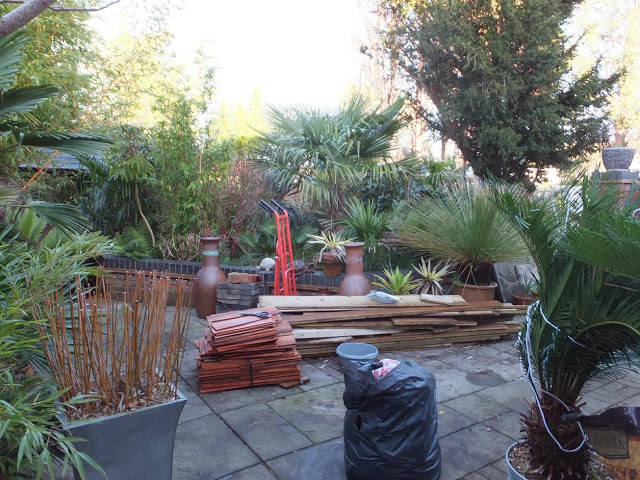 |
| Incomprehensible placing of random things.... |
Anyway, we have been buying a few new palms in the past few weeks with the biggest haul of our recent purchases coming from the winter sales at the Palm Centre. It was too dark to take photos of our haul when we got home last night so we just unloaded the car and freed the palms from their cling film bondage and left the picture taking until today.
 |
| Trachycarpus fortunei |
First things first, more Trachycarpus fortunei! For the type of gardening that we do they make great backbone and filler plants. Each of them has a trunk of over 40cm and at £17.50 ($28) each are an absolute bargain! So three of them went back home with us.
 |
| Rhapidophyllum hystrix |
In my post yesterday I mentioned that I was after three palms in particular and I managed to get all three of them which includes the Needle Palm, Rhapidophyllum hystrix. This very slow growing palm is still a rarity in the UK and specimens for sale with a reasonable price tag are certainly worth getting. It is a cold hardy palm and along with Trachycarpus fortunei can be planted out with confidence in most British gardens and other areas with similar climates or even slightly colder.
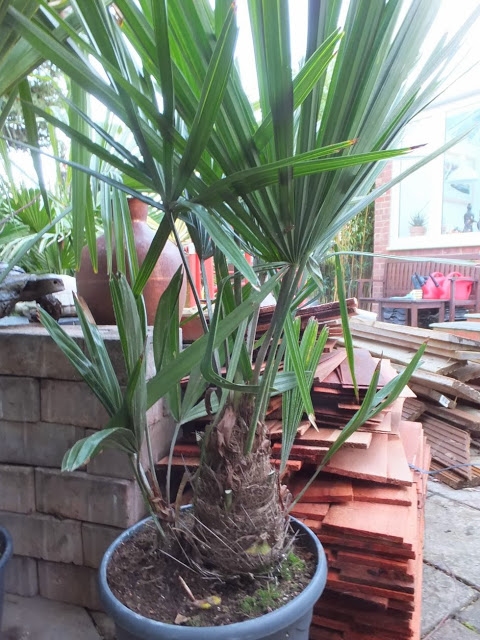 |
| Rhapidophyllum hystrix |
A palm native to the US, it is a shade loving palm if planted on milder areas or areas that get really warm summers. For British gardens it is recommended that this is planted in full sun or at least in a bright spot as summers here are rarely consistently warm and winters are not always mild. We can attest to this, we have several planted out already in the garden and we actually managed to kill one that was sited in deep shade.
 |
| Rhapidophyllum hystrix |
The Needle Palm is called as such due to the needles found on its trunk which actually look more vicious than they really are. Still handle it with care as a miscalculated move can result in injuries.
This is a very, very slow growing palm with a shrubby habit. Buy as big a specimen as you possibly can as it is so slow to gain size and best planted in association with other plants with stronger architectural merits.
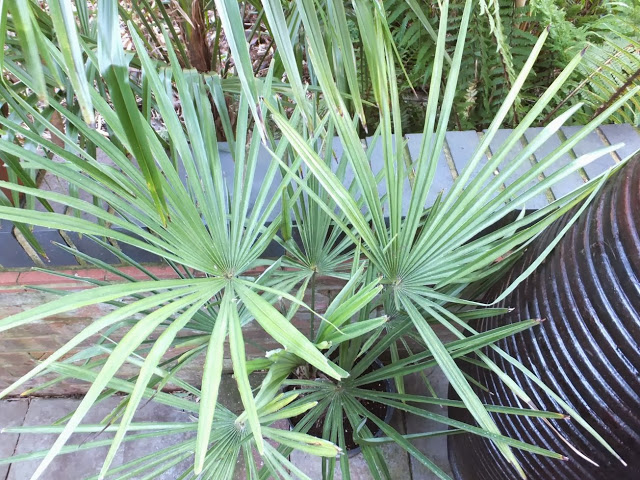 |
| Trachycarpus 'Naggy' |
The second palm on my list is a Trachycarpus 'Naggy' which is a cross between a female T. nanus and male T. wagnerianus and is a Palm Centre special/creation. The hardiness potential of this palm is good with both parents being UK hardy palms with an appearance potentially distinct enough from other Trachycarpus with its deeply split leaves. If you look closely there seems to be some red spider mite damage to the leaves of the one we chose due to it being kept in a greenhouse for years but this shouldn't be a persistent problem as this palm will be planted out soon.
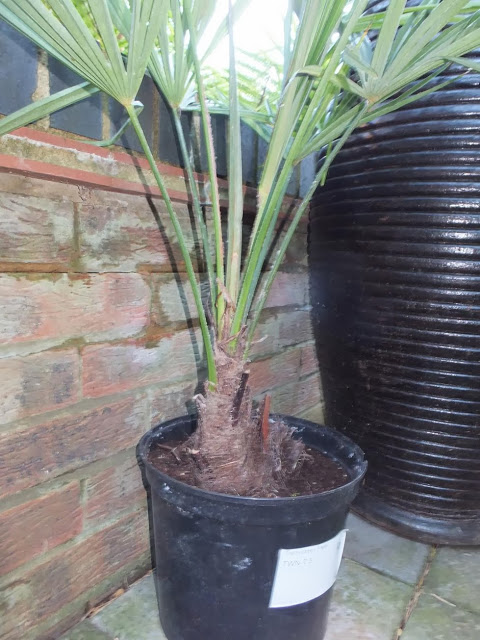 |
| Trachycarpus 'Naggy' |
We're hoping 'Naggy' will have the good traits of each parent with the split leaves of the slow growing and subterranean trunked T. nanus, and the the vigour and trunk forming character of stiff leafed T. wagnerianus. Although a palm with inverse trait (squat and stiff leaved) doesn't sound bad either!
The third palm on my list is Chamaedorea microspadix and we bought three of these, two small specimens and a large one over six feet tall for an instant impact. These are replacement palms. We used to have several pots of this palm but lost them all in the fire last July. Unfortunately all the pots were huddled in the same area that has been badly affected so none survived. It's one of the plants we lost that we really missed so we're glad that we finally have replacement ones.
This is the only palm from our recent purchases that won't be planted out but instead used as part of a summer display. It is hardy enough for milder parts of the UK or favourable areas of a garden with a good microclimate that remains warm enough to keep this palm alive and looking good. We have tried planted a few out in our garden before and sailed through fine on milder winters but not in the most recent ones which were not on the mild side. They got cut back down to the ground and although they did come back in the spring they didn't size up quick enough to make a good showing in the summer. I'd say they are fine down to -6C for brief periods, slightly lower than that they start to sustain considerable cosmetic damage and much lower than that you'll lose all of the top growth and will have to come back from the ground.
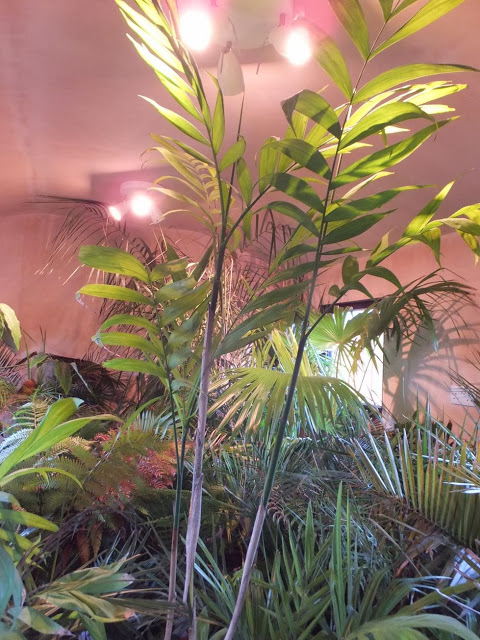 |
| Chamaedorea microspadix inside the jungle hut |
This is a shade loving, suckering palm and is prone to slug and snail damage so keep an eye out for these pests!
Apart from the Palm Centre we also recently bought a trunked Chamaerops humilis, the European Fan Palm and the only one native to this continent, in Crews Hill Gardening Club a few weeks ago. It is now taking shelter under the roof of the jungle hut verandah until it gets planted out.
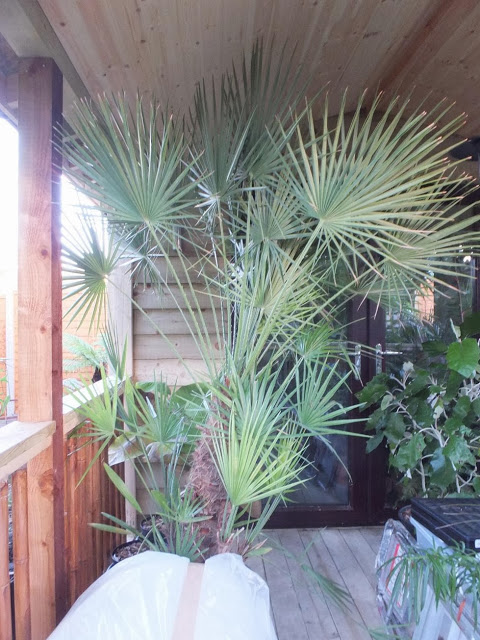 |
| Chamaerops humilis |
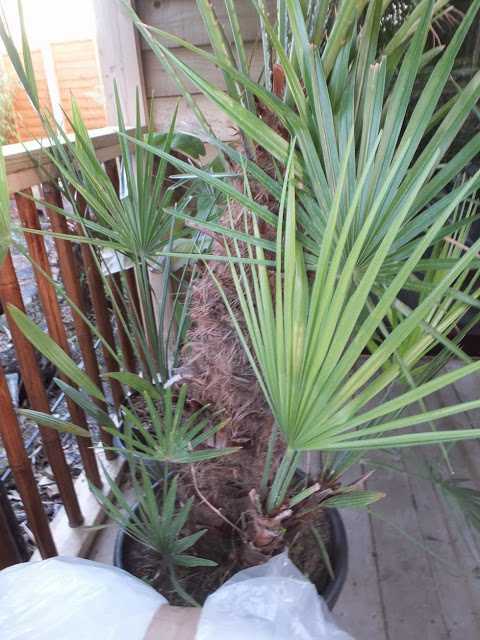 |
| Chamaerops humilis |
After Trachycarpus and Rhapidophyllum this genus is the one next in line when it comes to hardiness and suitability for planting out in British gardens. Trailing not far behind Chamaerops are the genus Butia, Jubaea, Trithrinax, and Brahea. Hardiness also depends on the species of each genus, with some species hardier than others. Even Trachycarpus, some of its species are only borderline UK hardy like T. martianus. Other genus of palms that would have been hardy had if we get reliably warm summers here are Sabal, Nanorrhops, just to mention a few.
Anyway, back to the last set of new palms we have bought recently are a couple of Trachycarpus princeps hybrids, and this one came from Hardy Palms.
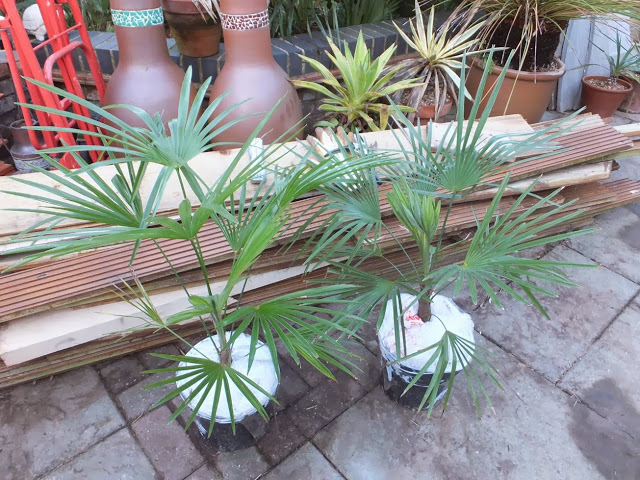 |
| Trachycarpus princeps hybrid palms |
Such a beautiful, graceful looking palm even at a small size, our photos don't do it justice...
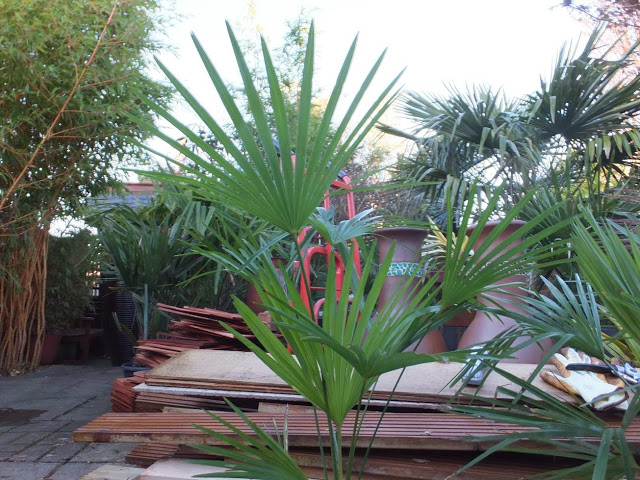 |
| Trachycarpus princeps hybrid |
It is said to be a hybrid palm between Trachycarpus princeps and either a T. nova or T. fortunei. The undersides of the leaves has a blue tinge to it which is akin to the hue T. princeps leaves but the speed and vigour of growth T. nova/T. fortunei. It'll be interesting to see how the appearance of this palm will change and develop in time, we'll all just have to wait and see but the potential for hardiness is really good based on the toughness of both of its parents.
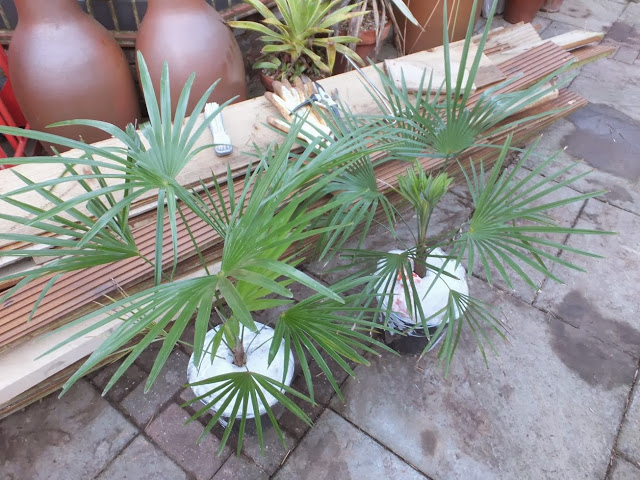 |
| Trachycarpus princeps hybrid |
So there you are, a few new palms for the New Year. We haven't figured out where to place each of them but I'm sure we'll eventually figure that out once the ball starts rolling again in just a few weeks time, very early in the spring.
First things first though, we must figure out what to do will all these materials scattered on our patio and where to store them. And make a sensible arrangement of the patio until we're ready to give it a proper makeover.
Mark :-)
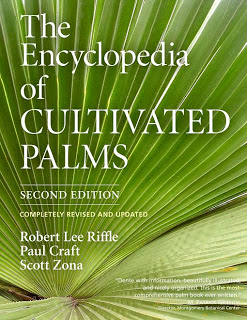

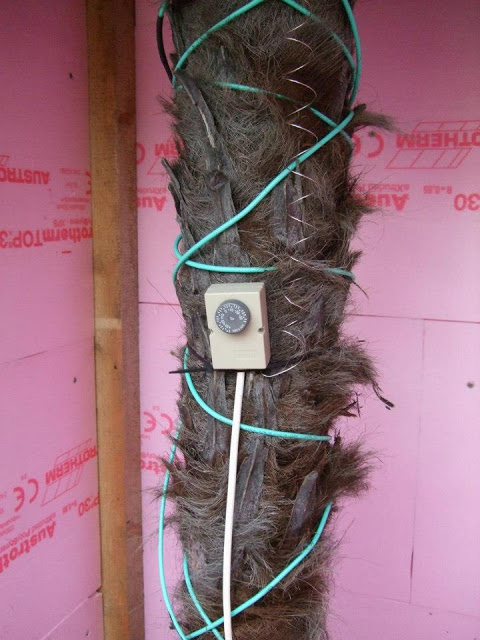



 This gardening blog follows our journey as we create our Tropical and Exotic themed garden. We hope you'll enjoy the journey as much as we do. We started our Exotic Garden in 2005 and this site will show its development, as well as our travels, both abroad and within the UK to gardens, nurseries and friends.
This gardening blog follows our journey as we create our Tropical and Exotic themed garden. We hope you'll enjoy the journey as much as we do. We started our Exotic Garden in 2005 and this site will show its development, as well as our travels, both abroad and within the UK to gardens, nurseries and friends.
